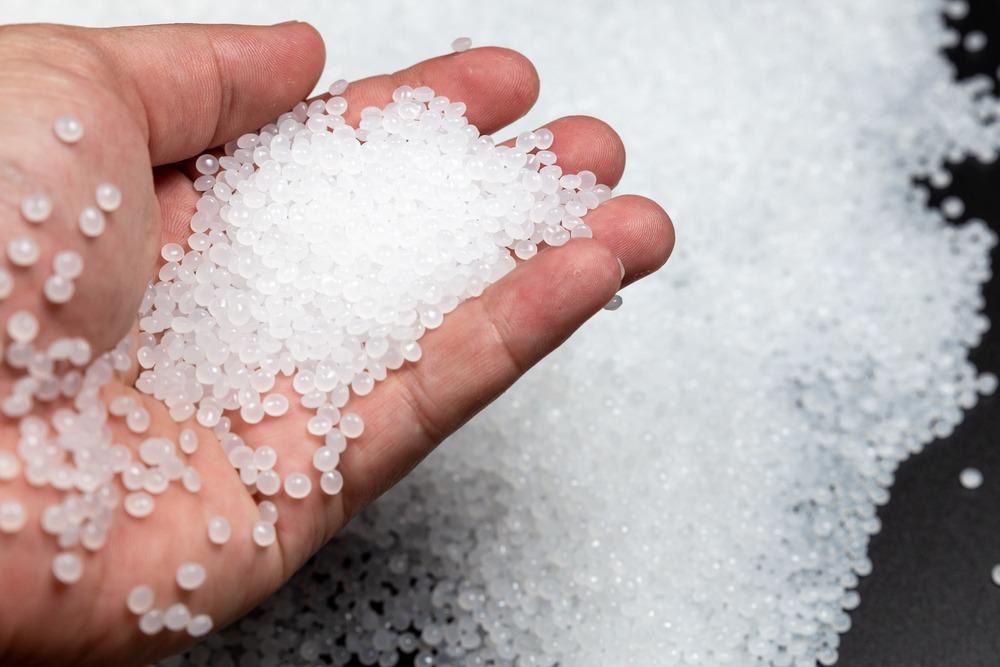To keep global warming below 2 ⁰C (as stated by the Paris Agreement) and avoiding climate change's worst effects, the world must achieve net-zero carbon emissions. Creating new carbon-neutral manufacturing processes is essential but does not address the potential adverse effects of carbon storage. A new partnership involving US companies Twelve and Lanza Tech aims to solve this issue through carbon transformation: recycling CO2 emissions into new products in a carbon-negative process.

Image Credit: J.M. Image Factory/Shutterstock.com
What is Carbon Neutrality?
The concept of carbon neutrality is commonly misunderstood. When hearing that a process is ‘carbon-neutral’, many people believe that carbon is not emitted throughout the process.
However, a carbon-neutral process can still emit carbon emissions. However, to do this, carbon-neutral processes make use of other technologies known as carbon capture or carbon sinks. Carbon sinks are defined as processes that absorb more carbon than they emit. Because of this, any process can achieve carbon neutrality, so long as it makes use of carbon capture to absorb as much carbon out of the atmosphere as it emits.
What Processes are Considered Carbon-Neutral?
This caveat has led to some perplexing and counterintuitive decisions on what processes can be considered carbon-neutral. For example, there is still a debate in academia as to whether burning wood pellets should be considered carbon-neutral, as the wood’s carbon emission is equivalent to the carbon that the tree absorbed in its life or will be absorbed by future trees planted.
When considering other emission issues, or the decades it would take for a new tree to absorb the carbon emission created from burning another tree, this concept becomes controversial.
With global warming posing a larger and more immediate threat, such uncertain carbon-neutral processes are not enough. Modern-day industries are encouraged to take more direct action to ensure their carbon capture technology produces a more beneficial effect on the atmosphere.
Carbon capture methods encapsulate a broad spectrum of technologies, but they all follow the same simple objective. Carbon is removed and concentrated until it becomes an easily manageable gas. The carbon gas is then safely stored in underground reservoirs (carbon-negative) or recycled into other products (carbon-neutral).
Though carbon-negative seems at first glance to be the more beneficial route, it still comes with serious issues. Carbon storage is costly and difficult to implement. The concept of carbon storage is also relatively new, with little known about the possible adverse effects that long-term carbon storage may have.
Carbon-neutral recycling methods, also known as ‘carbon transformation’ allow manufacturers to create green fuel from recycled CO2, which in turn offsets carbon emissions by removing the requirement to create fuel by other, less environmentally friendly methods.
In doing this, not only does the carbon for one process decrease but it lessens the demand for fuels in other industries, lowering carbon emissions further and indirectly. An example of this is Siemens Gamesa’s plan to use wind power to create green hydrogen through hydrolysis. In doing this, a carbon-neutral process can lower the carbon emission of the hydrogen fuel cell market.
Creating Polypropylene using CO2

Image Credit: Kriengsak tarasri/Shutterstock.com
Twelve and Lanza Tech have partnered to create a recycling process to develop polypropylene, using only carbon-neutral or carbon-negative fuels and materials. This otherwise harmful manufacturing process will help decrease the carbon content in the atmosphere.
Polypropylene (PP) is one of the most used thermoplastics. Due to its resistance to both bacteria and chemical corrosion, plastic is used for bleach bottles, syringe tubes, pill containers, and much more. If polypropylene production can be carbon-neutral, while still being economically viable, this would decrease overall CO2 emissions dramatically.
To achieve such an ambitious scale of carbon transformation, US company Twelve developed O12: a thin, modular catalyst able to scale up to any size depending on the company using it. O12 is a new catalyst, inspired by the carbon absorption seen in nature. The catalyst absorbs CO2, water, and electricity to convert into carbon-based products.
If the electricity input into O12 is generated from a renewable source (such as a wind farm), this process is not only completely carbon-neutral but carbon-negative. For every ton of carbon product produced, the O12 uses 3 tons of CO2. The company has suggested that this technology can address 10% of all global carbon emissions.
Based in Illinois, US, Lanza Tech shares similar principles to Twelve but achieves its carbon transformation with different methods. Where a novel catalyst is used for Twelve, Lanza Tech makes use of biological carbon transformation to produce fuel.
The company has developed a component to be retrofitted to already-operating equipment, inside the unit, bacteria absorb CO2 from the atmosphere around them, converting it into chemicals that can then be used to create carbon-based products, such as plastics.
Like how the Twelve’s carbon neutrality is dependent on the source of the electricity input, Lanza Tech’s bacteria conversion method has stipulations for carbon neutrality. While the conversion of CO2 to chemicals is carbon-negative, the process of turning those chemicals into products determines whether the entire product manufacturing process will be carbon-neutral or not.
For this reason, the collaboration of the two companies is so beneficial. The carbon-negative product creation of Twelve, used in tandem with the carbon-neutral fuel creation of Lanza Tech ensures that the PP produced is carbon negative.
If successful, widespread manufacturing of ‘green’ polypropylene will lead to a significant decline in the thermoplastic industry’s carbon emissions. Further development of the O12 catalyst’s already promising usefulness may also lead to even further reductions in other industries.
References and Further Reading
Adreco Plastics. (n.d). Polypropylene Plastic Uses (PP) [online] Available at: https://adrecoplastics.co.uk/polypropylene-uses/
Bernoville, T., (2021). What is the difference between carbon-neutral, net-zero and climate positive? [online] Plan A Academy. Available at: https://plana.earth/academy/what-is-difference-between-carbon-neutral-net-zero-climate-positive/
Booth, M., Mackey, B. and Young, V., (2020). It’s time to stop pretending burning forest biomass is carbon neutral. GCB Bioenergy, 12(12), pp.1036-1037 Available online at: https://doi.org/10.1111/gcbb.12716
Climate Action - European Commission. (n.d.) 2050 long-term strategy. [online] Available at: https://ec.europa.eu/clima/policies/strategies/2050_en
Dean, C., Blamey, J., Florin, N., Al-Jeboori, M. and Fennell, P., (2011). The calcium looping cycle for CO2 capture from power generation, cement manufacture and hydrogen production. Chemical Engineering Research and Design, 89(6), pp.836-855. Available Online at:
https://doi.org/10.1016/j.cherd.2010.10.013
Dunbar, E., (2019). Climate Curious: Is burning wood for heat carbon neutral? [online] MPR News. Available at: https://www.mprnews.org/story/2019/11/09/climate-curious-is-burning-wood-for-heat-carbon-neutral
IEA. (2021.) Net Zero by 2050 – Analysis. [online] Available at: https://www.iea.org/reports/net-zero-by-2050
Johnston, C. and Cornelis van Kooten, G., (2015). Back to the past: Burning wood to save the globe. Ecological Economics, 120, pp.185-193. Available at: https://doi.org/10.1016/j.ecolecon.2015.10.008
LanzaTech. (2021). LanzaTech. [online] https://lanzatech.com/
Omnexus.specialchem.com. (2021). Twelve and LanzaTech Partner to Produce Polypropylene Using CO2 Emissions. [online] Available at: https://omnexus.specialchem.com/news/industry-news/twelve-lanzatech-polypropylene-co2-000225652?li=61053085
Twelve. (2021). Twelve. [online] Available at: https://www.twelve.co/
Disclaimer: The views expressed here are those of the author expressed in their private capacity and do not necessarily represent the views of AZoM.com Limited T/A AZoNetwork the owner and operator of this website. This disclaimer forms part of the Terms and conditions of use of this website.